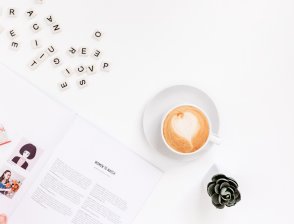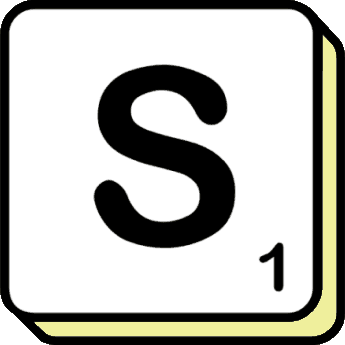Nouns and Verbs: Unveiling the Dynamic Duo of Language
Author: Brian Bowman
Date Published: 9 May 2023
Language is a remarkable tool that enables us to communicate and express our thoughts and ideas. At the heart of language lie two essential components nouns and verbs. Nouns represent people, places, things, or ideas, while verbs depict actions, states, or occurrences. In this blog post, we will embark on a captivating exploration of nouns and verbs, their roles in language, and the dynamic interplay between them.

Part 1 Nouns - Anchors of Meaning and Identity
Defining Nouns
Nouns are the building blocks of language. They encompass a wide range of entities, including concrete objects (e.g. "book", "tree"), abstract concepts (e.g. "love", "happiness"), places (e.g. "city", "beach"), and people (e.g. "doctor", "friend"). Nouns provide the anchor of meaning, enabling us to identify, categorize, and refer to the things and ideas that populate our world.
Classifying Nouns
Nouns can be classified into various categories, such as common nouns (general terms), proper nouns (specific names), countable nouns (individual items that can be counted), uncountable nouns (mass or non-discrete substances), and collective nouns (groups of entities). This classification system allows us to organize and understand the vast array of nouns in a structured manner.
Nouns as Subjects and Objects
In sentence structure, nouns play crucial roles as subjects and objects. As subjects, nouns initiate the action or state described by the verb (e.g., "The cat jumps".). As objects, they receive the action of the verb or function as recipients of the action (e.g. "He gives her a gift"). Nouns, in these roles, bring coherence and clarity to sentences, allowing us to convey information effectively.
Part 2 Verbs - Engines of Action and Expression
Understanding Verbs
Verbs infuse language with dynamism, representing actions, processes, or states. They express what people do, how things happen, or the condition of entities. Verbs are the engines that propel sentences forward, injecting vitality, and conveying a sense of movement and change.
Verb Tenses and Conjugation
Verbs exhibit a variety of tenses, including past, present, and future, allowing us to situate actions in time. Additionally, verbs undergo conjugation, altering their form based on the subject, number, person, and tense of the sentence. Conjugation helps establish agreement and precision, ensuring that the verb aligns grammatically with the other elements in the sentence.
Verbs for Expression and Description
Verbs extend beyond actions and encompass states, emotions, and sensory experiences. Descriptive verbs (e.g. "smile", "shimmer") evoke vivid imagery, painting a picture with words. Verbs of perception (e.g. "see", "hear") enable us to convey sensory experiences, providing a rich tapestry of language to describe the world around us.
Part 3 The Dynamic Dance of Nouns and Verbs
Complementary Roles
Nouns and verbs are inseparable partners, collaborating to construct meaningful sentences. Nouns provide the foundation by introducing entities and concepts, while verbs give life and movement to those entities, illustrating actions and states. Together, they form the core elements of sentences, weaving a tapestry of meaning.
Synergy and Context
The relationship between nouns and verbs extends beyond mere syntax. The choice of nouns and verbs affects the nuances, tone, and overall message of a sentence. Different combinations can evoke distinct emotions or highlight specific details. By leveraging the synergy between nouns and verbs, writers and speakers can craft powerful and evocative expressions that resonate with their audience.
Creating Vivid Imagery
Nouns and verbs work in harmony to create vivid imagery and paint pictures with words. Carefully chosen nouns provide specific details and imagery, while dynamic verbs animate those details, bringing them to life. This synergy allows readers and listeners to visualize scenes, engage their senses, and immerse themselves in the narrative or description.
Expressing Complexity and Nuance
Nouns and verbs collaborate to convey complex ideas and subtle nuances. By combining precise nouns with appropriate verbs, we can communicate abstract concepts, emotions, and intricate relationships. This interplay enables us to express the intricacies of human experience, capturing the essence of our thoughts and feelings.
Enhancing Clarity and Coherence
The proper selection and usage of nouns and verbs contribute to clarity and coherence in communication. Clear and specific nouns ensure that our intended meaning is conveyed accurately, while well-chosen verbs provide precision and eliminate ambiguity. By employing nouns and verbs effectively, we can avoid misunderstandings and ensure that our message is conveyed with clarity.
Dynamic Language and Engaging Writing
Language that harnesses the power of nouns and verbs is inherently dynamic and engaging. The energetic nature of verbs and the vividness of nouns captivate readers and listeners, making the communication more compelling and memorable. Through skillful selection and arrangement of nouns and verbs, writers can create prose that sparkles with life and resonates with their audience.
Conclusion
Nouns and verbs form the bedrock of language, working in tandem to shape our communication. Nouns provide meaning, identity, and descriptive power, while verbs infuse language with action, movement, and expression. The interplay between nouns and verbs creates a dynamic and captivating linguistic landscape, enabling us to convey ideas, emotions, and experiences with depth and clarity. Understanding the roles and potential of nouns and verbs empowers us to wield the power of language effectively, bringing our words to life and forging connections with others.
